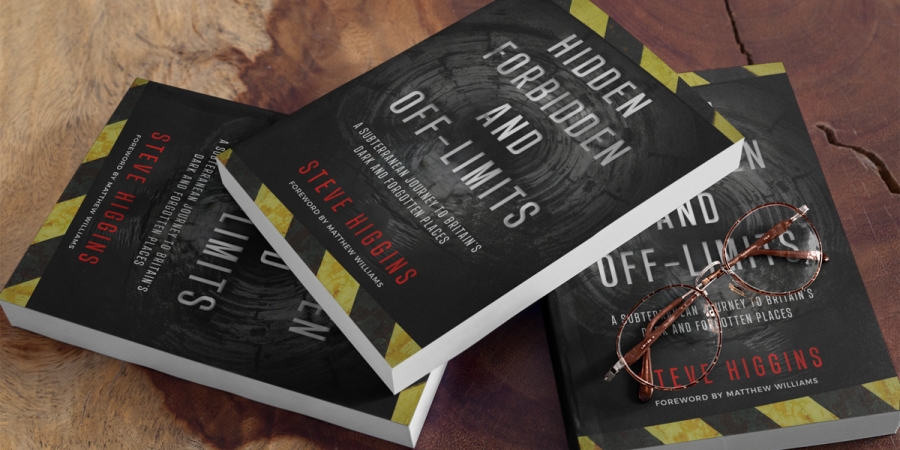

This page is more than two years old.
Discover the secret bunkers and underground spaces from Steve Higgins' new urban exploration book, 'Hidden, Forbidden & Off-Limits', which is available now in various formats.
In the book, Steve takes readers on a journey through some of the most intriguing and mysterious underground locations around the world. From Cold War-era bunkers to abandoned underground factories, these hidden spaces offer a glimpse into the past and a chance to explore the unknown. Get ready to discover the secrets that lie beneath our cities and towns, as we take a look at some of the most fascinating locations from Steve's book.
Monkton Farleigh Mine
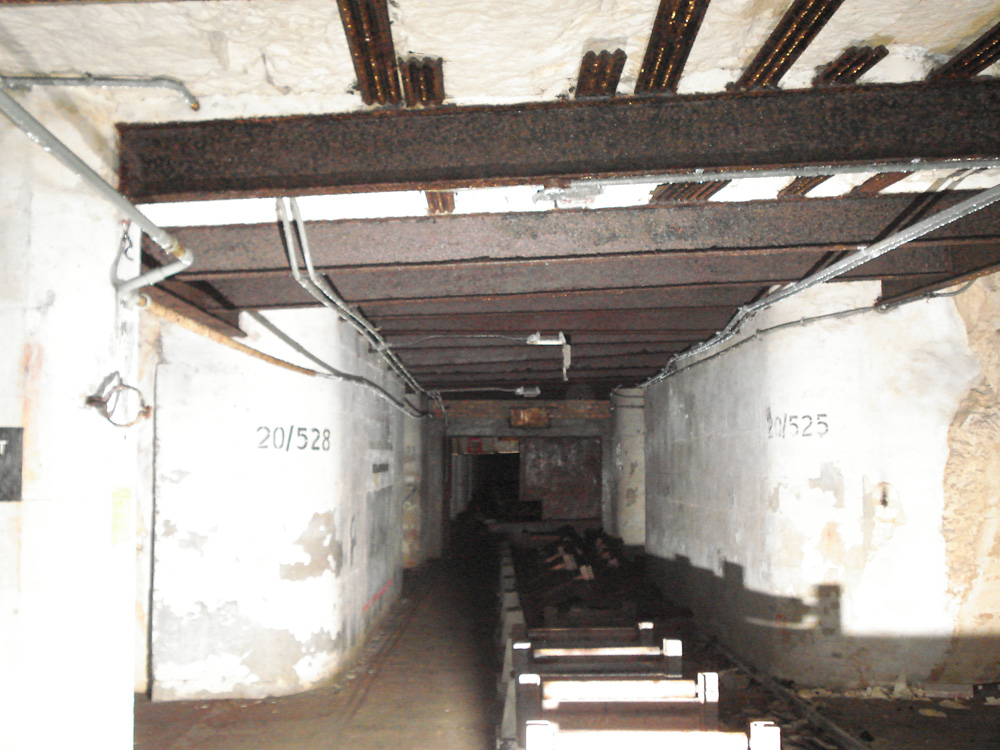
Monkton Farleigh Mine is an abandoned underground stone quarry located in Wiltshire. It was in operation from the late 19th century and by the time the quarry closed in the 1930s, it consisted of around 1.2 square kilometres of tunnels. It was later re-purposed as a secret underground ammunition store by the government during World War II, it was able to hold up to 120,000 tons of ammunition. The maze of tunnels, storage bays and underground areas were, for a time, open to the public as a museum, which sadly closed in the late 1980s. In 1996 the main part of the mine was acquired by a secure warehousing company, who offer secure storage solutions in the underground space to this day.
Tunnel Quarry
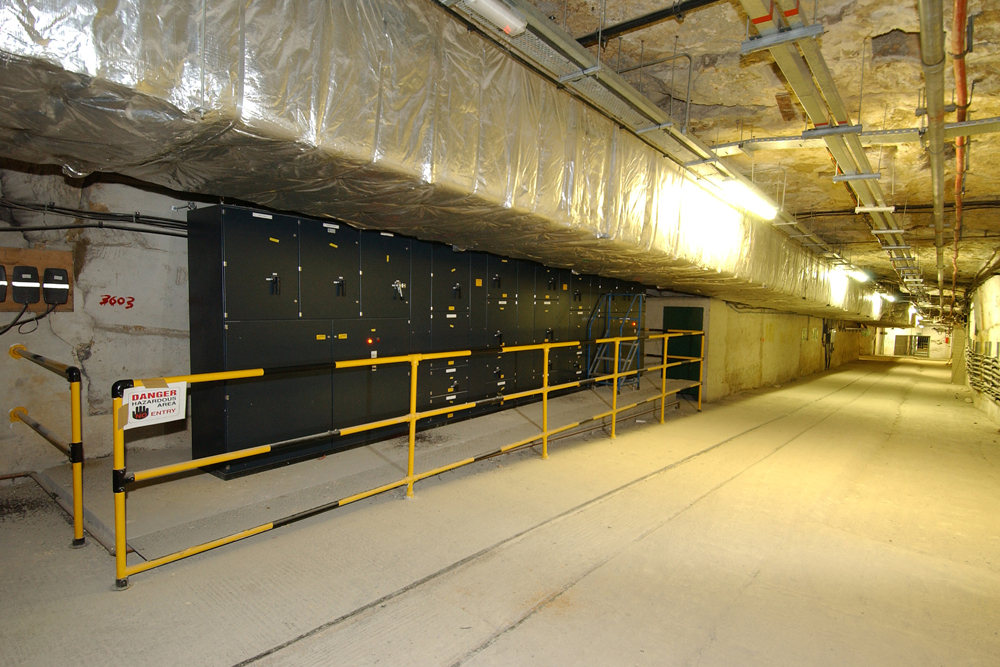
Photo: Crown Copyright
Tunnel Quarry, like Monkton Farleigh, was one of the four sub-depots of the Central Ammunitions Depot, parts of the converted stone quarry are still security classified sites today. The quarry, which lies beneath the market town of Corsham, had a link to the Bristol to London railway line at the eastern portal of Brunel's Box Tunnel.
Box Quarry
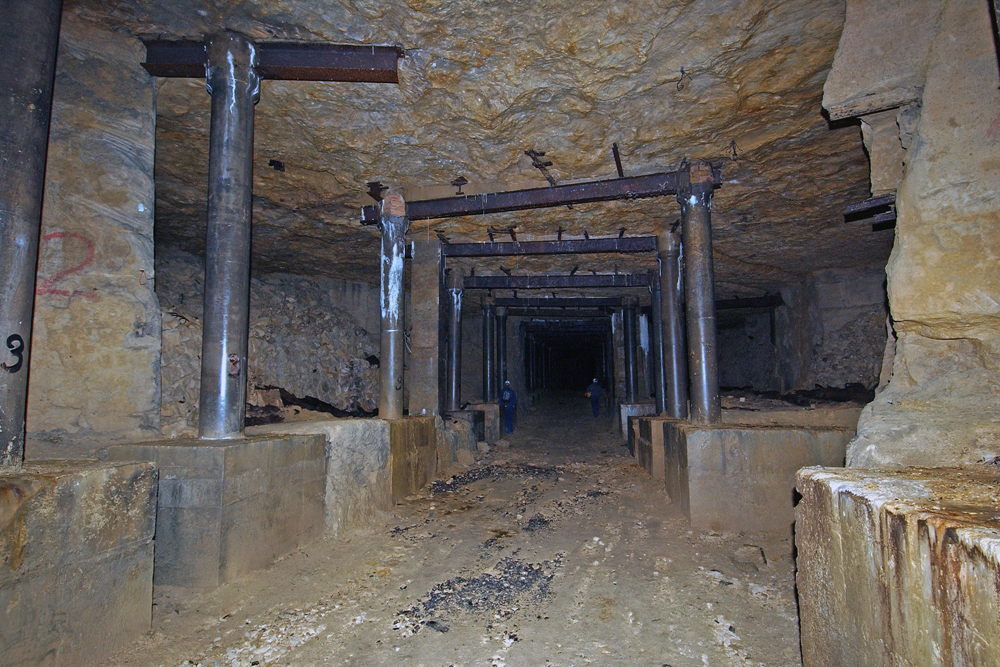
Photo: Crown Copyright
Box Quarry has been drawing in urban explorers for decades, partly because it is by far the biggest and most complex of all the abandoned mines in Wiltshire, but also because it borders on some of the Ministry of Defence's underground spaces, including some of their present-day secret subterranean sites. In recent years, there has been problems caused by unprepared explorers getting lost in the vast quarry.
Spring Quarry
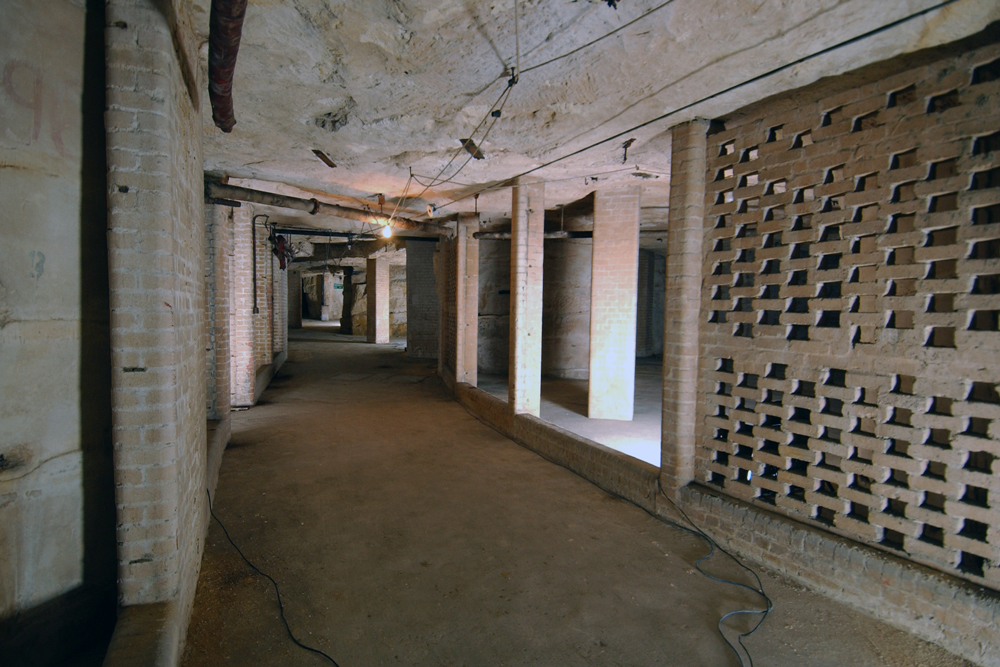
Photo: Crown Copyright
A large stone quarry, also sat beneath Corsham, which joins the southern edge of Tunnel Quarry. It was converted into the world's largest underground factory by the government during WWII. Later, it became Royal Navy stores and part of the factory was converted into the government's emergency relocation site in the event of a nuclear attack.
Copenacre Quarry
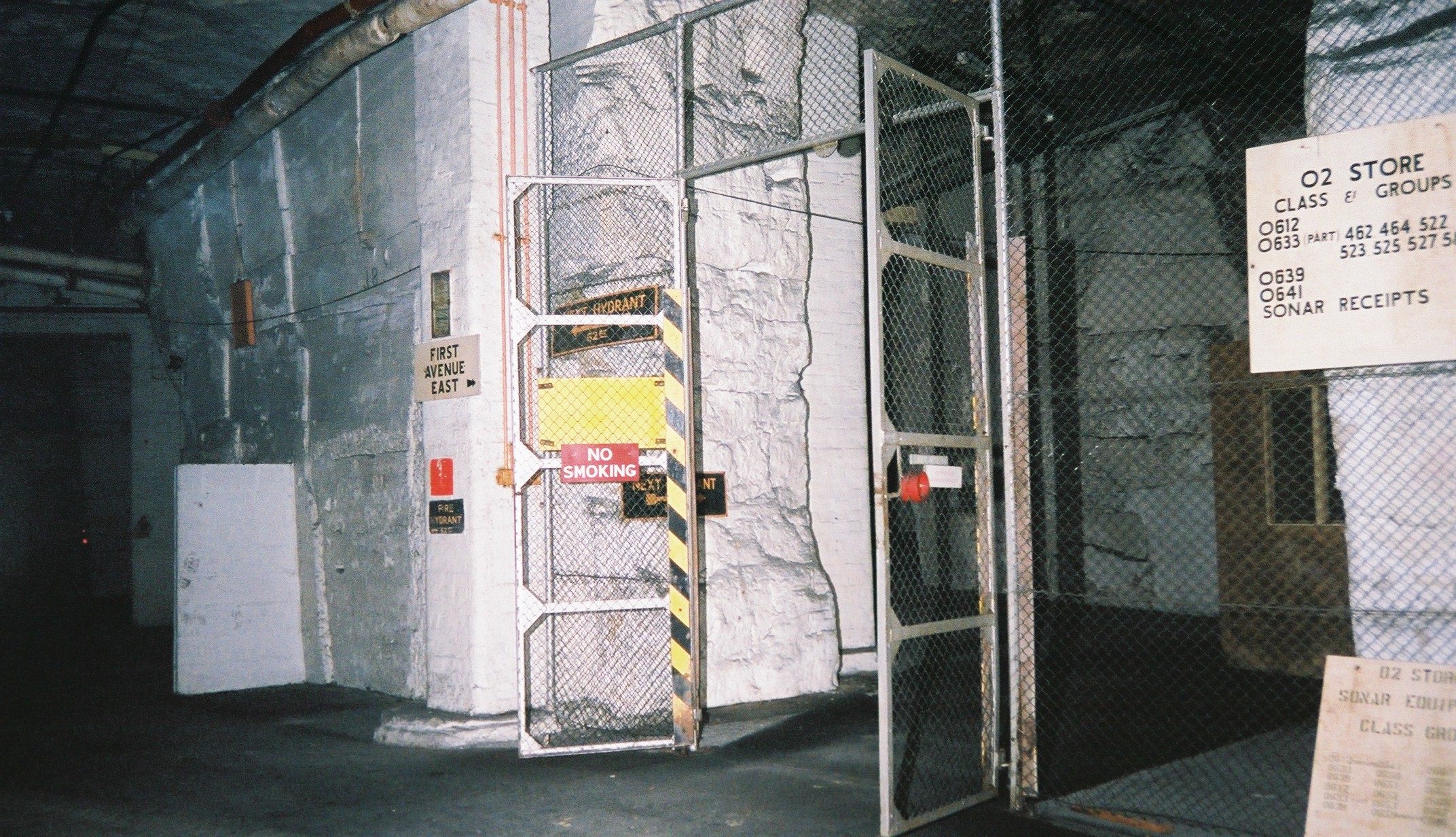
Like other underground spaces in the Corsham area, Copenacre Quarry was originally a stone quarry, but was later put in to use as a Royal Navy store. It remained in operation until the mid 90s. The entrances are now sealed and lost within a newly built housing estate. The tunnels below still exist, they are abandoned and slowly being filled with offcuts of stone from a still-operation neighbouring stone quarry.
Corsham Computer Centre
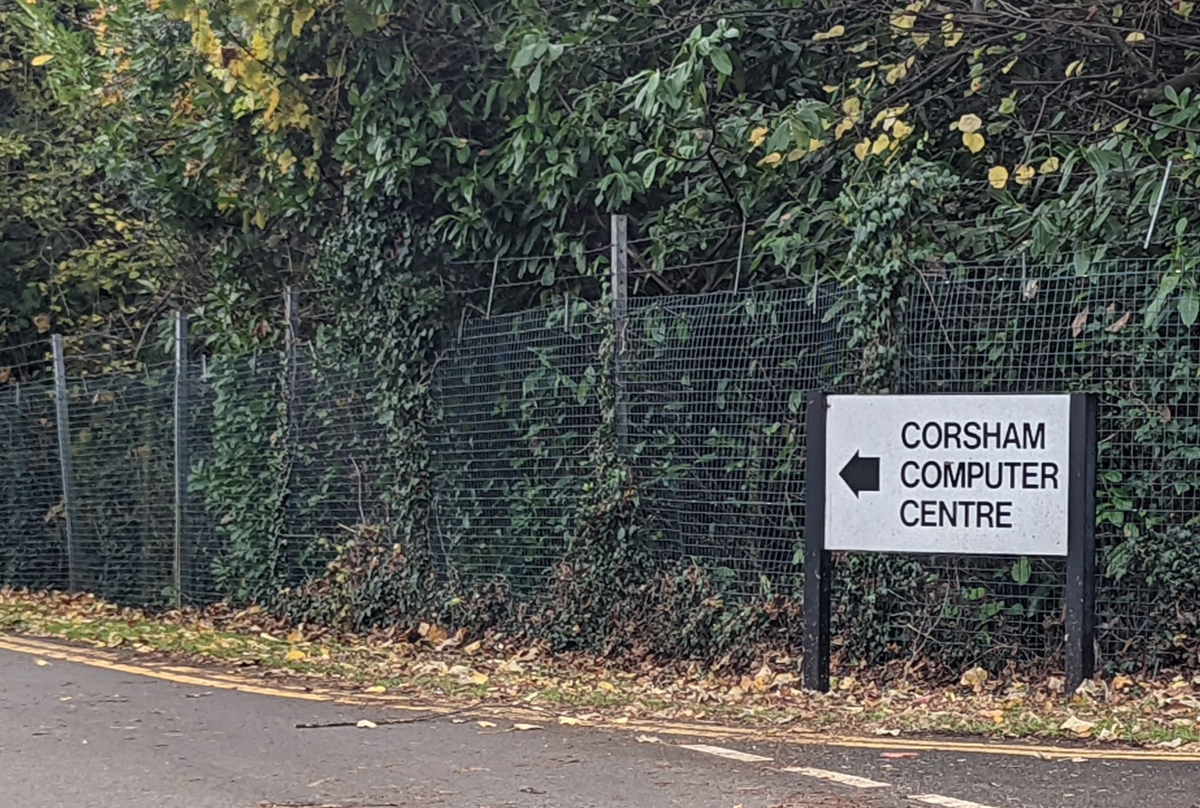
One of the UK's best kept secrets, CCC is an active government bunker located on Peel Circus in Corsham. Above ground the site consists of nothing more than a doorway in to a mound of earth, obscured from public view by a ring of trees and vegetation. The locals know it as the Corsham Computer Centre, but its official name is the Command and Control Centre and it sits within a secure section of Tunnel Quarry.
Hartham Park Quarry
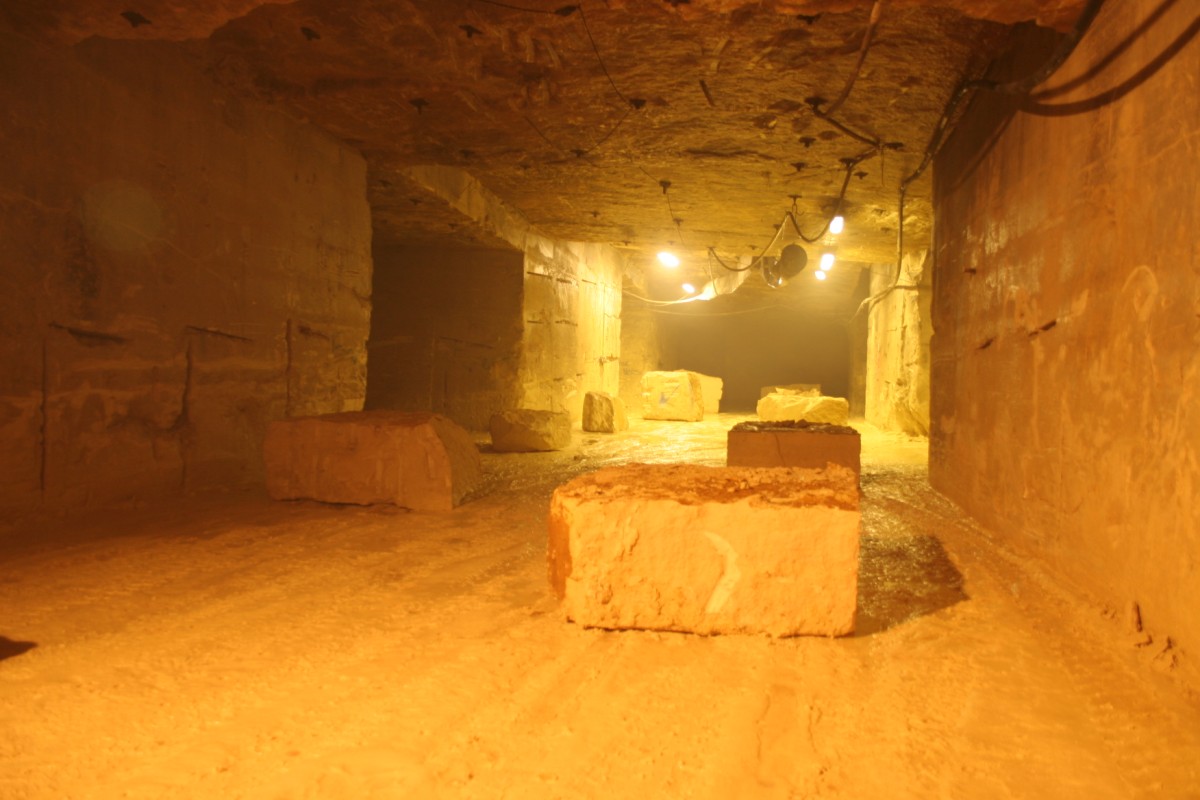
Also known as Pickwick Quarry, it was a stone quarry until 1939 when it became a temporary naval store. In the 80s the tunnels became a quarry museum, which operated for about a decade. After this, it returned to its former use as a stone quarry and is still worked for stone today. Although this quarry was never converted into a bunker, it does have underground connections to a neighbouring former Ministry of Defence quarry.
Ridge Quarry
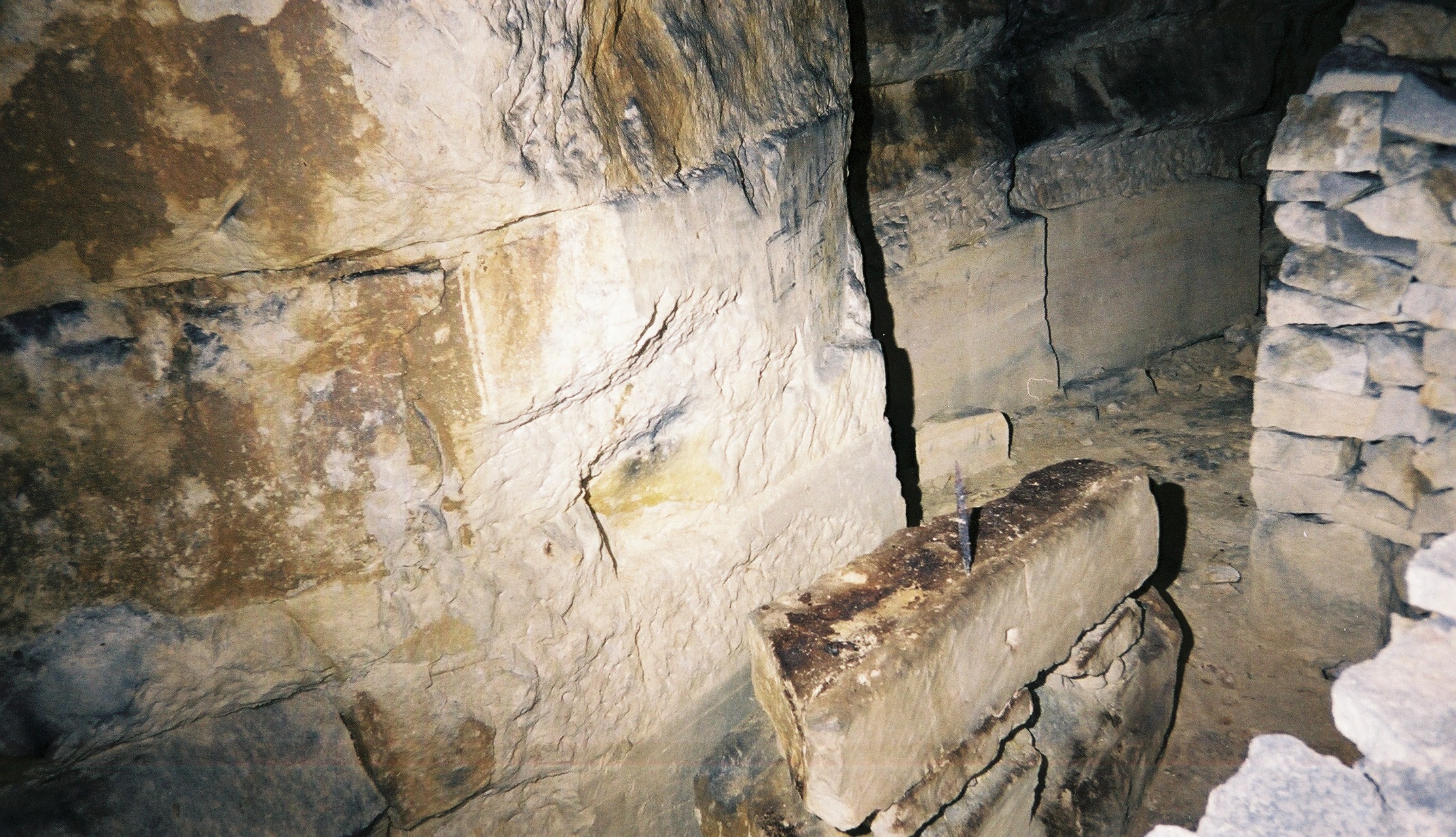
Located just outside of Corsham, Ridge was originally quarried for Bath stone up until 1914, it was later put in to use by the government as an underground ammunitions store. The quarry was never converted to the same extent as the rest of the ammunition depots in the Corsham, so it became surplus soon after the war finished and has remained abandoned ever since.
Eastlays Quarry
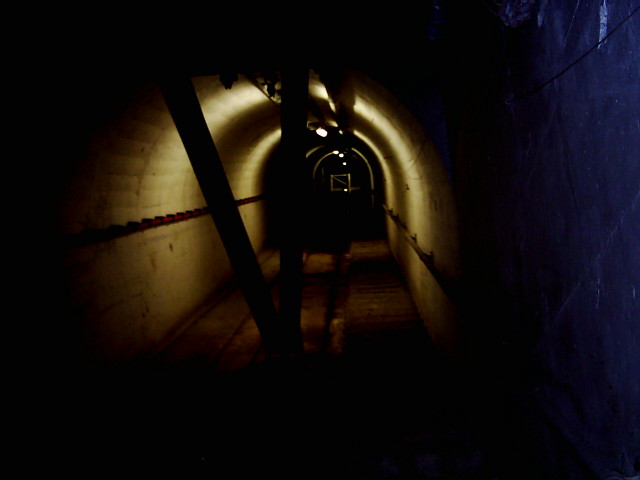
Eastlays Quarry has been used since 1988 for secure, controlled wine storage. Handling over four million cases of wine a year, Octavian has the capacity at the Eastlay cellars to store over 800,000 cases in ideal conditions, 30 metres underground, with constant year round temperatures, an absence of ultra violet light, no vibration and full humidity control.
Westwood Quarry
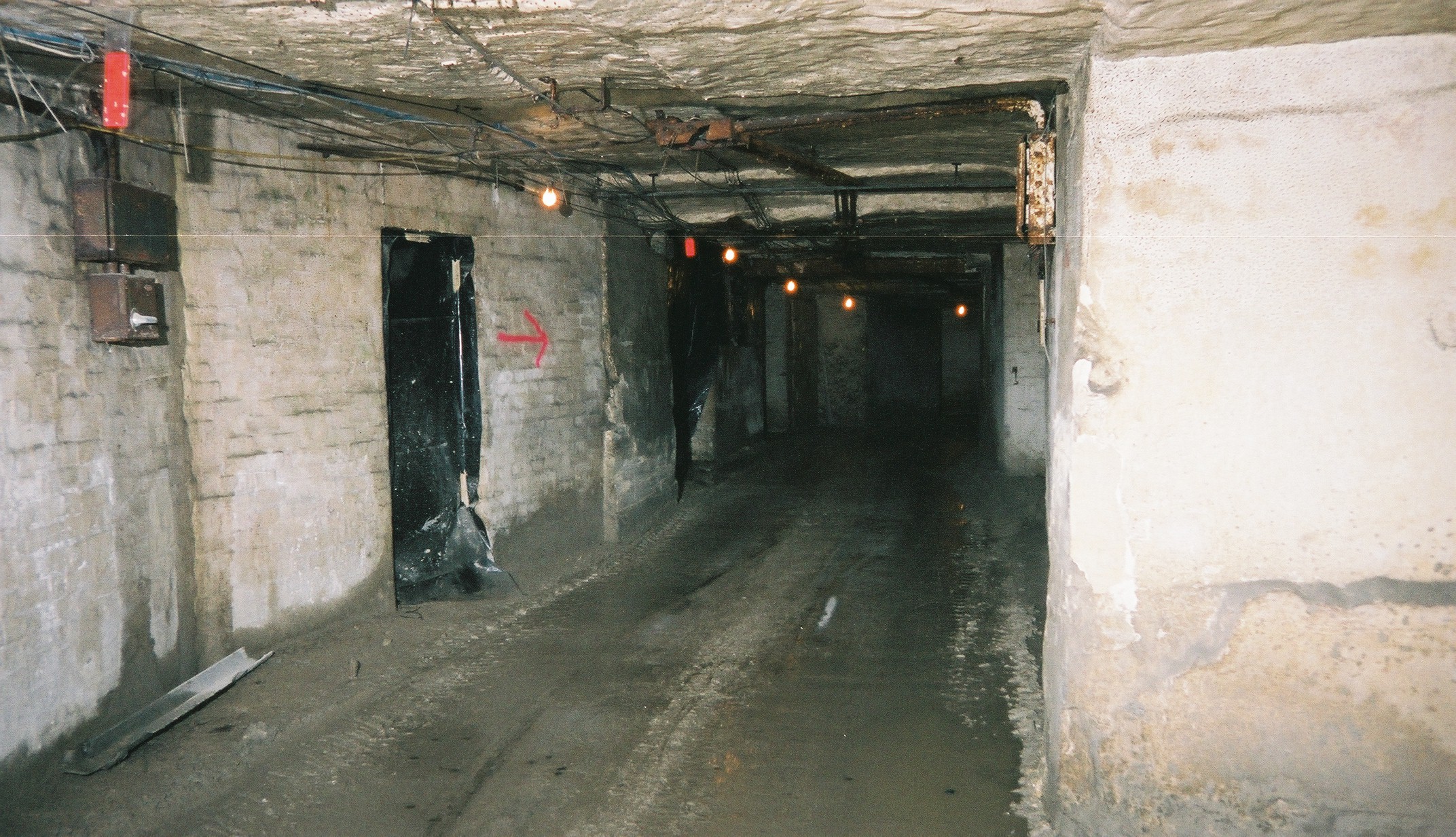
During the Second World War, this large stone quarry under the Wiltshire village of Westwood took on two important new roles. Parts of the quarry were used as an underground factory involved in the construction of anti-aircraft guns, while another part of the site became a secure underground vault to keep many British treasures evacuated from London safe from German bombs, including the crown jewels.
Drakelow Tunnels
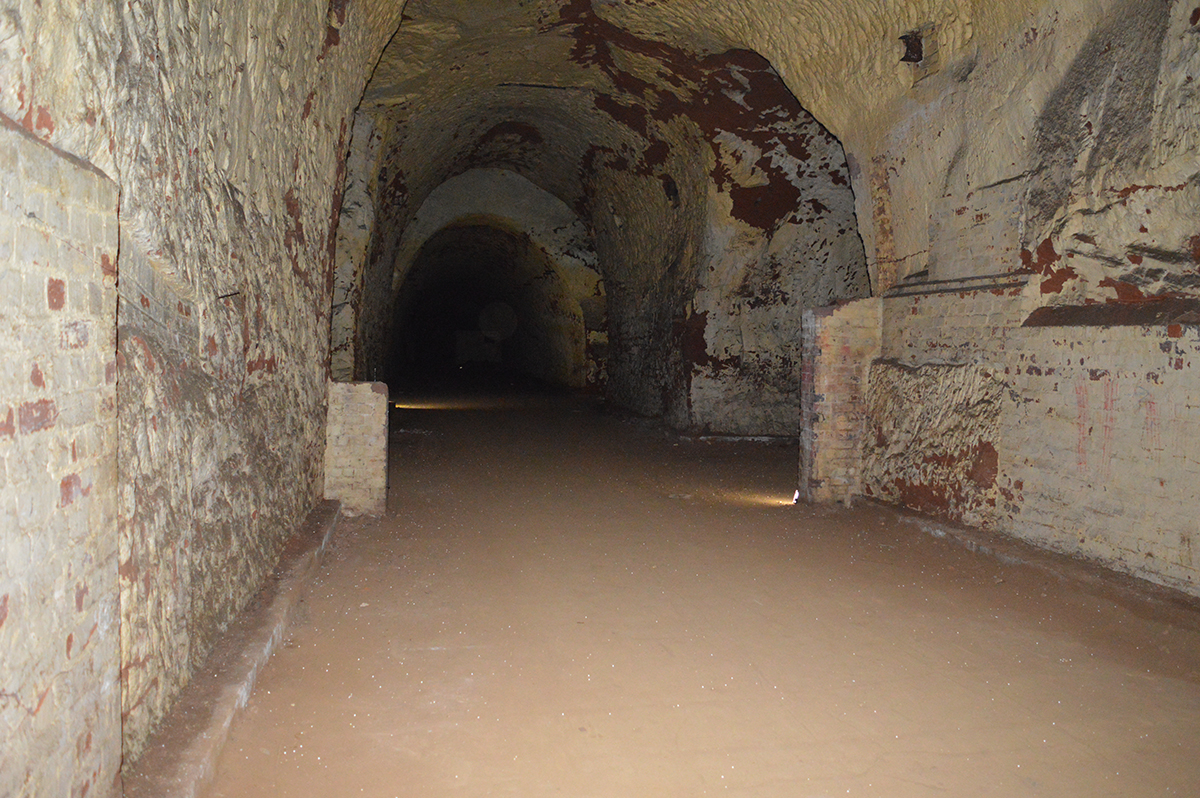
Drakelow Tunnels were originally excavated to house an underground factory where Rover produced aircraft parts as part of the war effort. After the Second World War it was refitted and put on standby during the Cold War as a bunker for the local government. In recent years it has been a popular location with ghost hunters, but is now a bonded wine store - although part of the tunnel has been retained and preserved as a small museum.
Protected Area Wood Norton (PAWN)
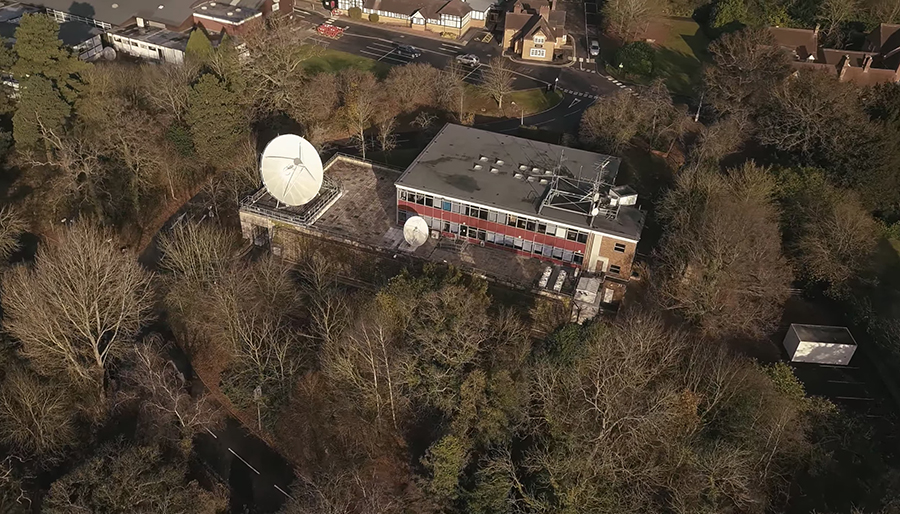
Photo: Secret Vault
Situated near Evesham and hidden beneath a wooded hillside, a transmission tower is the only clue to motorists of its existence as they pass by on the busy A44 in Worcestershire, this is the BBC's Protected Area Wood Norton. The bunker, which dates back to the Cold War era, was designed to house relocated staff from London, who were able to use the subterranean studios to maintain public-service broadcasting and relay vital information to the public in the event that the UK was attacked with nuclear weapons.
PINDAR
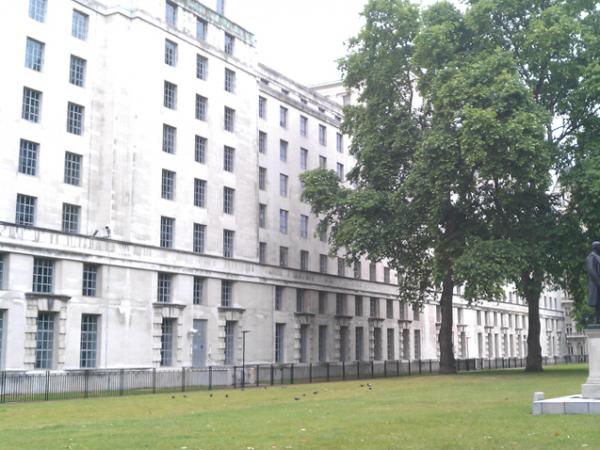
PINDAR is a secure government bunker complex, constructed in the 1990s beneath the Ministry of Defence headquarters on Whitehall in Central London. The original plans for the bunker called for a small, short term facility but the role of PINDAR was expanded in the mid 80s to act as a secure meeting place and provide the Government with a protected crisis management facility.
Paddock
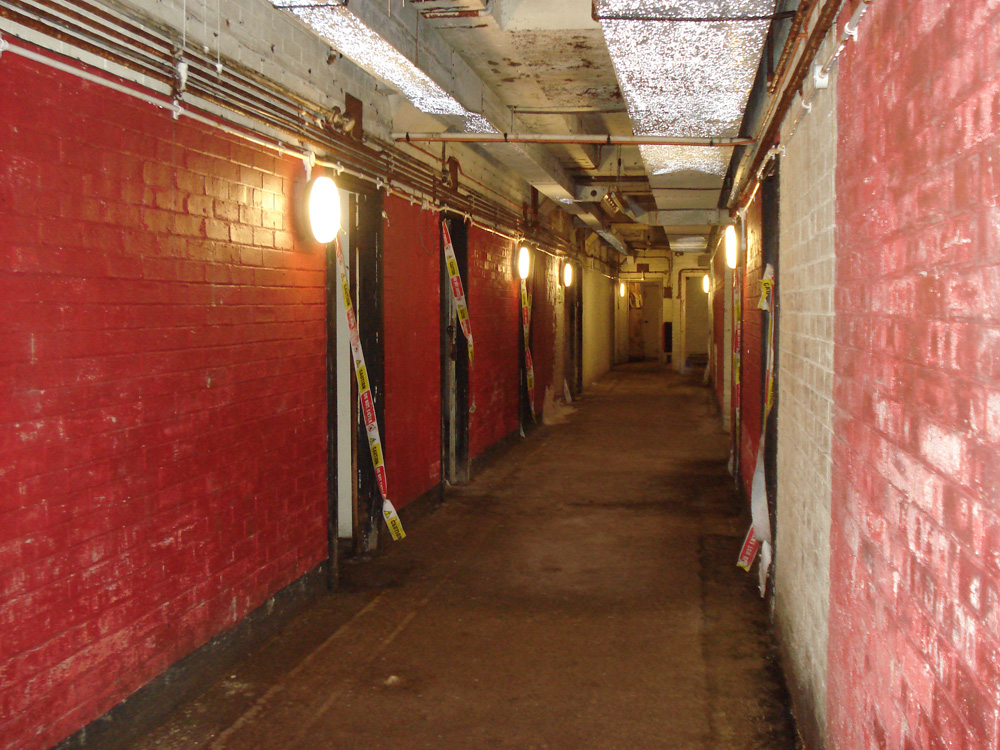
With fear growing that his Central London bunker might take a direct hit, Winston Churchill's alternate Cabinet War Room bunker for World War II was constructed in 1939 under the north-west suburb of Dollis Hill. Paddock was only visited by the Prime Minister once before it was abandoned in 1944.
Primary Network Control Centre (PNCC)
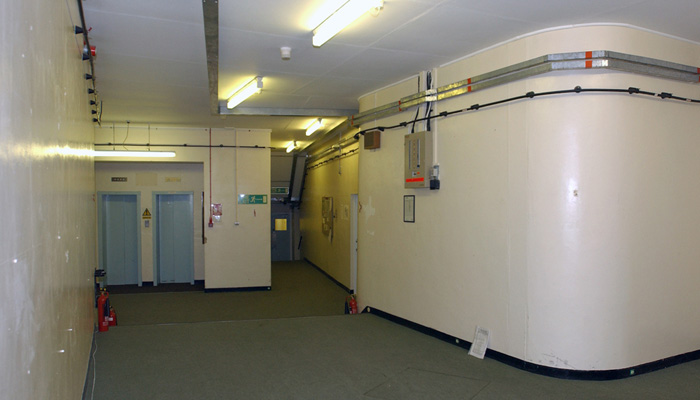
Photo: Crown Copyright
To the western end of Tunnel Quarry was an area which was originally supposed to be part of the ammo stores, however due to a geological fault this area was never developed. The government later made use of it when, in 1943, they converted it into an underground military communications centre known as the Primary Network Control Centre (PNCC), which operated up until the 1990s.
Burlington
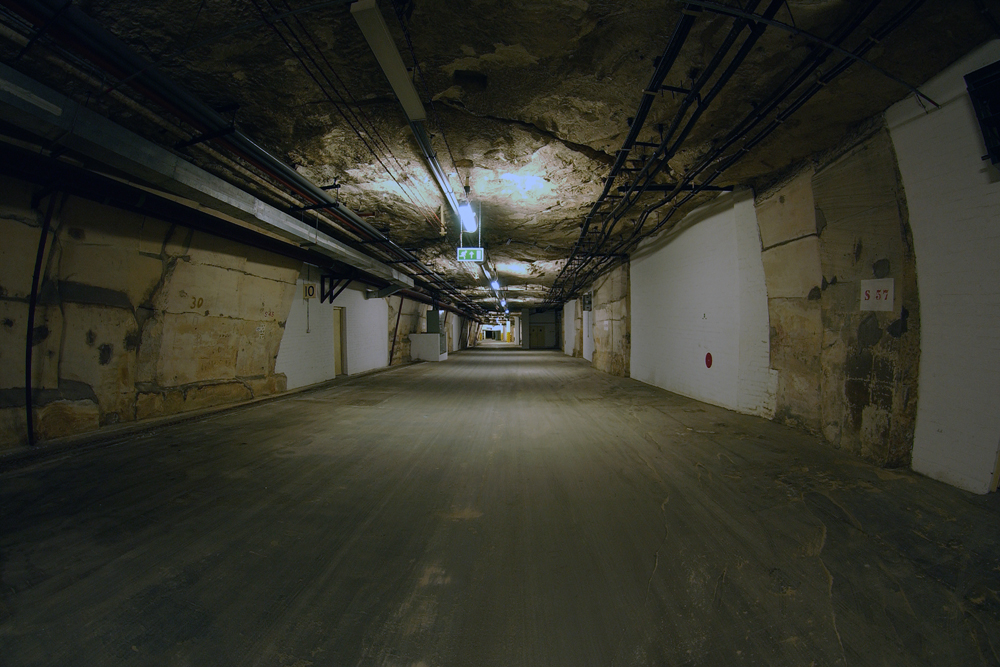
Photo: Crown Copyright
Burlington has had many codenames since its conception, including the most recent, Site 3. It was the former emergency relocations site for the government in the event of nuclear war. The huge subterranean hideout was constructed under Corsham within Spring Quarry, and was designed to safely house 4,000 government ministers and officials, including the Prime Minister. The site has been abandoned since the 1980s and was eventually declassified at the end of 2004.
A Subterranean Journey To Britain's Dark & Forgotten Places
All of these formerly top secret locations are featured in much more detail in 'Hidden, Forbidden & Off-Limits', the new urban and underground exploration book written by Steve Higgins, the founder of Higgypop.com.
Having spent much of his professional life honing his creative skills working at some of the country's biggest brands in London, Steve has now returned to the South West of England - the region where he embarked on his first underground trip as a teen, an area so rich with subterranean secrets that Steve couldn't resist the thrill of urban exploration.
Circumvent the anti-trespass barriers, dodge the bats, and descend into these hidden landscapes to discover why people are so fascinated by the unknown worlds beneath their feet. With a foreword by Matthew Williams, the urban explorer and ufologist who helped shine a light on many of the government's underground coverups.
If you're interested in learning more about the secrets that lie beneath Britain, be sure to check out 'Hidden, Forbidden & Off-Limits', which is available now from Amazon on paperback, hard cover, as an ebook for Kindle, and as an audiobook on Audible.
© Crown Copyright Notice: Images on this page are reproduced with the permission of the Controller of His Majesty’s Stationery Office.
Further Reading
Dive into the world of the paranormal and unexplained with books by Higgypop creator and writer Steve Higgins.

Investigating The Unexplained
Practical advice on conducting paranormal investigations and uncovering the unexplained.
Buy Now
Hidden, Forbidden & Off-Limits
A journey through Britain's underground spaces, from nuclear bunkers to secret wartime sites.
Buy NowMore Like This
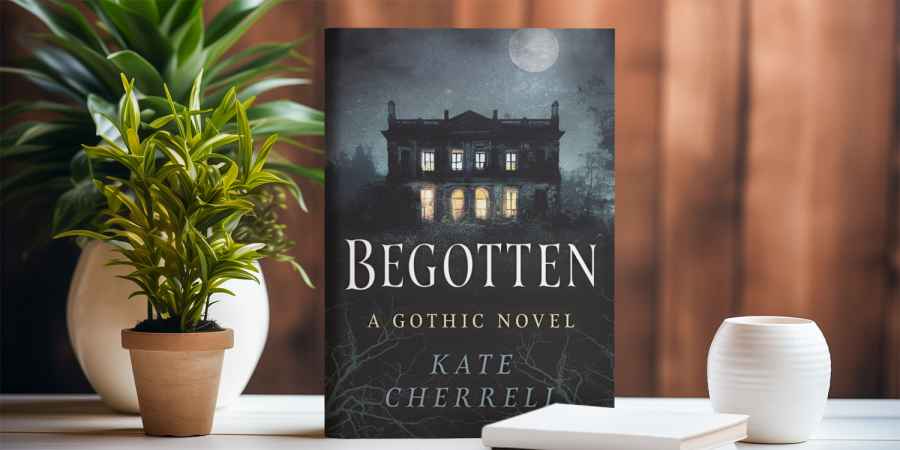
Kate CherrellApril 14, 2025
Kate Cherrell's Debut Gothic Horror Novel 'Begotten' Arrives This May
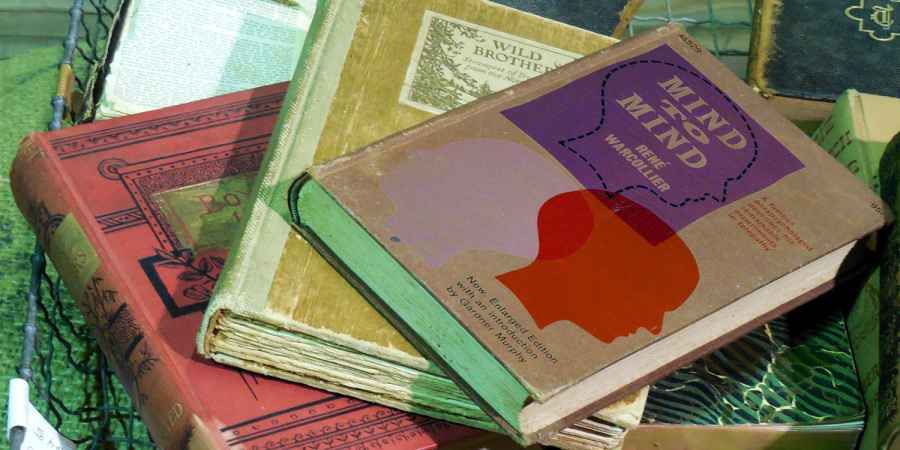
BooksMarch 17, 2025
Revisiting 'Mind To Mind': René Warcollier's 1948 Book On Telepathy

Remote ViewingMarch 05, 2025
7 Things We Learnt About Remote Viewing From This Forgotten Book
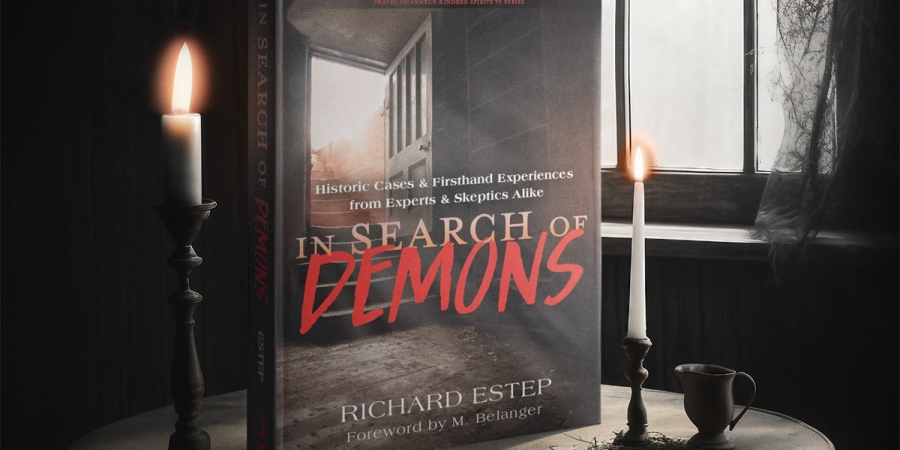
BooksNovember 22, 2024
Richard Estep Explores The Demonic In His New Book 'In Search Of Demons'
 See More on Audible
See More on Audible
Comments
Want To Join The Conversation?
Sign in or create an account to leave a comment.
Sign In
Create Account
Account Settings
Be the first to comment.